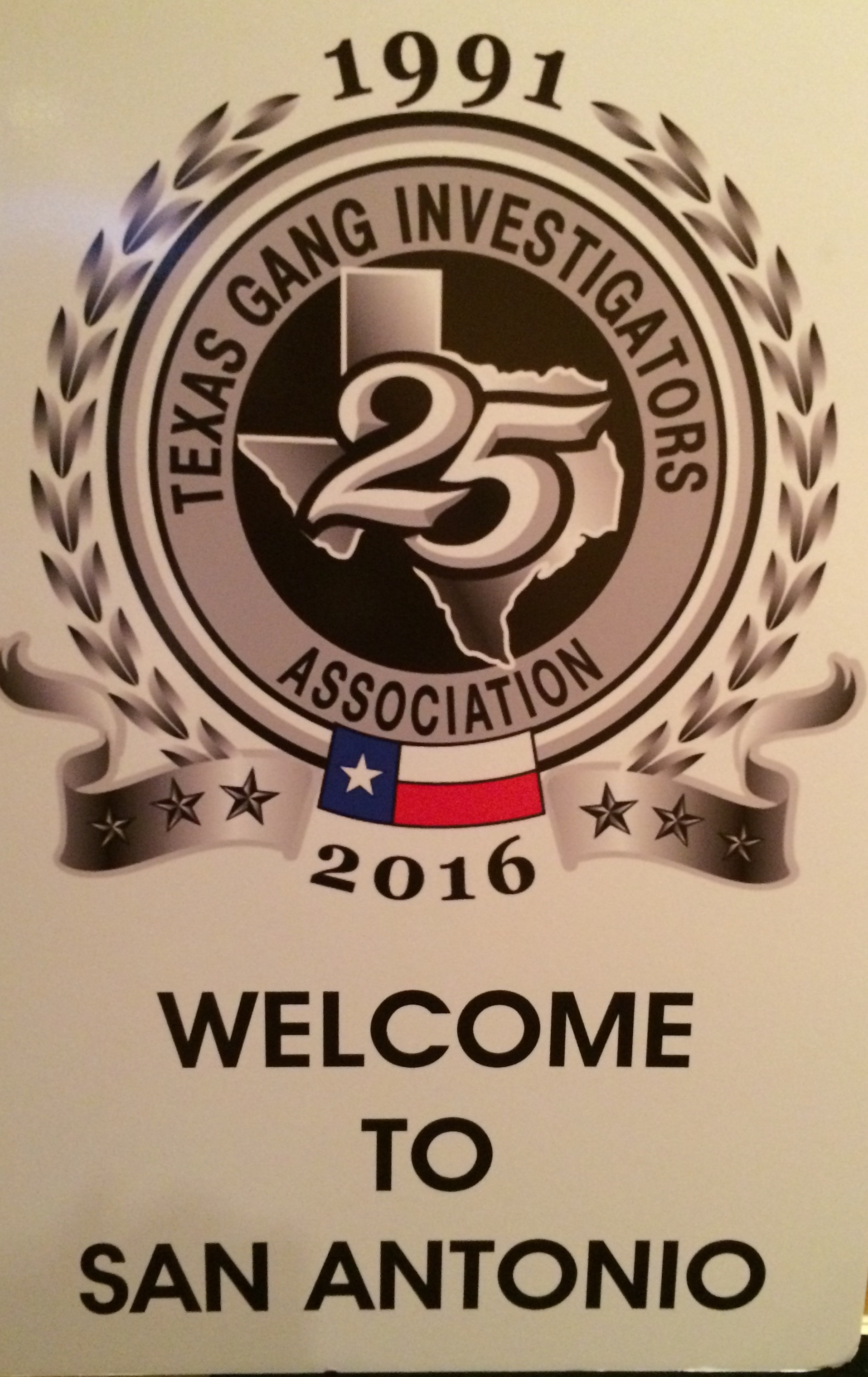
by Glenn | Jul 10, 2016 | Law Enforcement
 Through the years I’ve attended many a conference. Some were required training while others I requested due to their specialized subject matter. It wasn’t until my June 28th attendance at the weeklong Texas Gang Investigator’s Association (TGIA) Conference in San Antonio, Texas, that I came to fully appreciate the extent of intense effort it takes behind the scenes to produce an outstanding conference.
Through the years I’ve attended many a conference. Some were required training while others I requested due to their specialized subject matter. It wasn’t until my June 28th attendance at the weeklong Texas Gang Investigator’s Association (TGIA) Conference in San Antonio, Texas, that I came to fully appreciate the extent of intense effort it takes behind the scenes to produce an outstanding conference.
This year I was honored with another invitation to return and sign my novels for the 800+ law enforcement related attendees. Yes, it was great to talk “books” with everyone, but it afforded me the opportunity to again visit with many who have become close friends. And each year, new friendships are made. That’s one of the many wonders in law enforcement—once you’ve been a cop, you’re never out of the family.
I watched the TGIA board members and volunteers (I’d try to name all but am afraid I would miss one) constantly in motion. They registered hundreds of people, checked class schedules, ensured supplies were available, ferried people to and from the airport, verified evening events were all in order, and a thousand other matters. Behind the scenes was hectic, yet for the attendees, the conference was seamless. The speakers ranged from federal to local enforcement departments and provided useful, valuable information, not the type of “smoke-up-the-posterior” talks that many self-proclaimed speaking experts feed audiences to impress themselves.
One of the many excellent actions I observed was the security provided for each training session. Everyone’s badge  was read and verified with a scanner before entering a class. This afforded the opportunity of a truthful exchange of critical data the officers could use upon their return home.
was read and verified with a scanner before entering a class. This afforded the opportunity of a truthful exchange of critical data the officers could use upon their return home.
If TGIA members haven’t thanked their board for the great conference, then they should. Members definitely received their money’s worth in training, and the ability to network with fellow professionals was priceless.
But this wasn’t a light-hearted conference. It dealt with violent crimes and pathetic criminals who have little concern for humanity… and it underscored the dangers law enforcement daily confront such as the July 7th tragedy in Dallas where police officers were senselessly killed and wounded while protecting angry demonstrators who protested against law enforcement.
While our news media daily focuses on ratings and biased political reports, the underworld of organized gangs flows like a raging river—a river with little regard for whom it drowns. Organized gang crimes touch everyone everywher e, and yet it is ignored because most people still think of ‘gangs’ as those wannabe-bad-boys who spray graffiti on fences and buildings. Well, ‘gangs’ graduated long ago into the big-boy realm of crime and the public has failed to keep pace with the knowledge.
e, and yet it is ignored because most people still think of ‘gangs’ as those wannabe-bad-boys who spray graffiti on fences and buildings. Well, ‘gangs’ graduated long ago into the big-boy realm of crime and the public has failed to keep pace with the knowledge.
For security reasons I don’t use the full or real names of gang investigators I interview, and I certainly will not write about classified ops currently in progress by law enforcement. But, at the recent TGIA conference, I was fortunate to talk with several remarkable people in this investigative field. For all of their experience and involvements, you’d suppose they probably look like Rambo, Navy SEALS, or Marine Force Recon ready for battle… but they don’t. Instead, they are calm, quiet individuals you might walk past everyday in a store, never giving thought to their involvement in the gang world. Yet they are fully aware of you, your actions and analyzing you against their mental database of suspects.
“Johnny” is one of those men. When “Paul” recommended that I talk to his mentor about gangs, from all he had said, I expected to meet an almost larger than life man. He was known to be a virtual walking encyclopedia on gangs, and he had moved through the ranks of patrol, detective, special ops, multiple state and federal task forces, to his present position with a district attorney. So when this short, average built, soft-spoken, courteous man walked up and introduced himself, I was stunned. Not for long, though.
 Once we sat and began to talk, my respect for Johnny grew… and kept growing throughout our entire discussion. He represented the thousands of men and women that work tirelessly behind the scenes, without public notice or want of gratitude, in a filthy world that most citizens only see by watching action movies in a theater. Gang names, histories, rivalries, underworld criminal activities and statewide networks rolled out of him faster than I could take notes.
Once we sat and began to talk, my respect for Johnny grew… and kept growing throughout our entire discussion. He represented the thousands of men and women that work tirelessly behind the scenes, without public notice or want of gratitude, in a filthy world that most citizens only see by watching action movies in a theater. Gang names, histories, rivalries, underworld criminal activities and statewide networks rolled out of him faster than I could take notes.
The Mexican Mafia “Mexikanemi” was always at the top of the list. A ruthless organized gang with its own rules and constitution, Mexikanemi’s creation follows just about everything Aztec. The gang rules are simple: a member may not be an informant, or rat; a member must not be a coward; the ‘Eme’ (M=13th letter of alphabet which represents the gang) comes first, even before your own family; membership is for life, and it’s mandatory to assault/kill all dropouts. There’s more, but I believe you understand the essence of the rules.
When it’s beneficial gangs form alliances for their activities: drugs, extortion, human trafficking, murder, etc. They cross state and international lines without regard, and their reach is from the streets to prisons to crooked lawyers, law enforcement personnel, and officials on their payrolls. Yes, it’s sickening to consider how many cops and federal agents have been apprehended in past years for “being on the take” and assisting the gangs and cartels—but the millions of dollars flowing like a waterfall before a thirsty man, is truly the devil’s temptation.
“Johnny, in your career, you’ve seen a lot of bad things. Is there anything specific that bothered you the most?” I asked, expecting him to sit back in his chair and think a while.
 “Seeing children be brought into the prisons to visit their fathers,” he replied without hesitation. “When we were doing special ops in the prisons, I saw women bringing their children with them while they visited their husbands or boyfriends. Same thing when the men brought kids to visit their mothers.”
“Seeing children be brought into the prisons to visit their fathers,” he replied without hesitation. “When we were doing special ops in the prisons, I saw women bringing their children with them while they visited their husbands or boyfriends. Same thing when the men brought kids to visit their mothers.”
I was prepared for an answer about decapitated heads or battered women forced into sexual slavery, but children in prison visitation rooms wasn’t on my radar.
“Why that of all things?”
“Because the cycle is never broken. The kids grow up accepting violence, crime and prison as a way of life. It’s what their parents did so nothing is wrong. They’re indoctrinated into the criminal world as children and some will never break the way they think.”
“So the chain will never be broken. Gangs will always be around?” I understood his point.
“We can slow their activities, but never fully stop them. Street gangs are ruled from prisons across the nation. They live and die by violence. Street gangs, prison gangs, cartels… one keeps the other going. There are a few people that break out and turn good, but they’re the exception to the rule.”
“Did you ever worry about retaliation to your family?” I asked, thinking about the newer Italian mob members who followed none of the old rules.
“No. I never had a problem in what I’ll call ‘the old days.’ These guys live by respect and odd codes of honor even  though it’s violent. I treated them with respect when I arrested them. Disrespect only created further problems. In the old days it was easy to have a professional sort of respect toward one another. They knew I was chasing them and I knew they were running. When I caught them, they knew the game was up. I arrested them in a professional manner and they never gave me problems… I still see a lot of the ‘old’ guys. But the new breed of gang members doesn’t necessarily conduct themselves like that. They will do anything. The more vicious they can be, the more they like it.”
though it’s violent. I treated them with respect when I arrested them. Disrespect only created further problems. In the old days it was easy to have a professional sort of respect toward one another. They knew I was chasing them and I knew they were running. When I caught them, they knew the game was up. I arrested them in a professional manner and they never gave me problems… I still see a lot of the ‘old’ guys. But the new breed of gang members doesn’t necessarily conduct themselves like that. They will do anything. The more vicious they can be, the more they like it.”
And for the remainder of our discussion, I sat wondering how this quiet-natured, friendly guy had managed to retain his sanity after years of working in life’s sewer. Johnny will probably retire in a few more years. It’s a shame to think of the vast knowledge that will leave law enforcement with him.
“Rocky,” on the other hand, was friendly because he knew I had been a cop, but I don’t believe I’d want to know he was chasing me. He reminded me of an old wolf in a forest that knew all the tricks of the trade to hunt down his prey. Like Johnny, Rocky knew the gangs, their affiliations, tactics and crimes… seemingly everything. From conversations with others, I knew what he said was true. He wasn’t trying to blow smoke or pound his chest so to speak. While we talked, he casually kept watch on everyone around us. I liked that. It reminded me of an old veteran officer’s saying about remaining alert so you could remain alive. No cop’s ever been shot by a pair of empty hands.
“What’s the biggest drug problem?”
“Methamphetamines,” Rocky replied immediately.
“Not heroin?”
“Meth is giving everyone problems. Heroin has always been around,” he said, and proceeded to break meth down by quantity, costs, stepping it, and its migration by gangs and cartels throughout the lands.

All I could do was sit and shake my head at the monumental logistics required to move drugs throughout Europe, bypass certain cartels, and move the drugs back into the US. And along with that operation came human trafficking, murders, and a score of other activities.
I liked Rocky. Hell, I liked everyone at the TGIA conference I came into contact with. These were the men and women who were putting their lives on the line. They stand on the beach, trying to hold back the ocean waves of crime even though it seems useless. But they are still trying because they want to protect people, even those who demonstrate against them and use high political offices to further bias against them.
TGIA membership consists of people from different levels of the judicial system; local, state and federal officers, prison officers, probation officers, judges, etc. They work hand in hand to investigate, prosecute, and control the gangs with all the related crimes. Most of the men and women will never be known for what they do. They do their jobs in a shadow world and try to go home safely at night to their families. What they see each day weighs heavily upon them, yet they try to maintain a semblance of sanity in the belief that there are still good people worth protecting in this infested world.
The “Blue Line” across this nation is made of thousands of outstanding people. Yes, there are a few bad apples but when the numbers are counted; the bad apples are a mere fraction of a percentage of all the good cops.
My thanks go out to the men and women of the Blue who protect us daily.
Blue Lives Matter. All Lives Matter.

by Glenn | May 16, 2016 | Novels, Writing
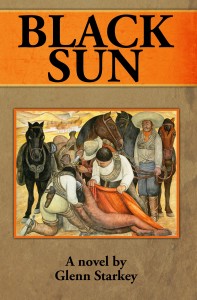
Readers often ask authors where ideas come from for their novels. It’s a good question and one even I’ve asked of my author friends. For me, BLACK SUN was born from old stories about bandits, revolutionaries, and Indian war parties my maternal grandfather used to tell me; curiosity about his life while growing up in the violent devastation and corruption of old Mexico, and last, my interest in history.
Every novel I write begins as an entertaining story for readers, then at some point, I find myself delving deeper into the research because the book has taken life and I’m compelled to learn more. Such was the case with my novel Amazon Moon in which the maltreatment of the indigenous tribes in the Amazon jungle became one of the prime focuses within the book when initially it was to be the setting.
BLACK SUN truly took years to write. I’ve heard other authors say the same of their works and now I understand how that can be. Normally, a year and a half is my standard length of time to write a novel: a half year to kick it around in my head and do research, and a year to pound the keyboard into the wee hours of the night. Yes, there are those wizards of the written word that say they turn out a book in three months, and I’m happy for them if they can—but I’m not one.
So, armed with a few of my grandfather’s old stories swirling in my head, I began to ask my family questions about him. Little was known. He rarely spoke of his early years and everyone accepted his silence. He may have grown angry when no one believed him, or whatever may be the case, but he said almost nothing about his youth and parents. My other problem was that the related people who had tidbits of information were dead, dying, or didn’t want to reveal much. When you dig around in family histories you are treading on fragile ground. Hidden scars might be revealed or old wounds reopened.
I had come to believe that it was almost too late in life to gather anything credible then a saving grace arose when one of my aunts spoke of her genealogical work on the family tree. From her research I was able to glean trivia, birthdays, baptismal dates, birthplaces, residential locations, and official data from government records. Overlaying all of the family information on a historical timeline of Mexico, I matched family
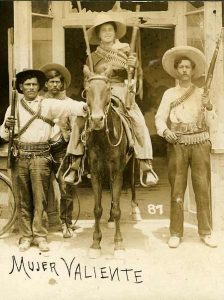
news.berkeley.edu
dates and history. My thousand-piece puzzle was gradually coming together. From there I dug into the individual history of small towns, people, battles, government officials, etc., and unfolded more tragedy than I wished to know. Then the story I needed to write revealed itself to me.
Every story has to have a variety of characters, one aspect of writing that can drive an author to the brink of insanity to create. I had no such problems. Research on the key players of the Mexican Revolution of 1910 soon reached a point where I wondered if anyone would find them believable. Take Pancho Villa for example. While some called him a hero, others claimed he was nothing more than a thief and murderer. A crack shot, one moment he might draw his pistol and without remorse, shoot a man. The next, Villa might be emotionally moved and openly weep. A renown womanizer, he cared little for money and never held a desire to be the President of Mexico, always informing others that such a position required an educated man which he was not. The stories, whether true or fabricated, go on and on and are the foundation of many debates over Pancho Villa.
Francisco Madero, who called for the revolution against President Diaz, was a short, frail man with a bird-like voice that grew squeaky and high-pitched when he was angered, and irritating to everyone’s ears. He talked to ‘spirits’ who counseled him on actions to take, and in the end, violently died as almost every major player in the revolution did.
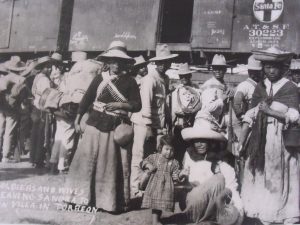
University of Chicago
Most people believe the Mexican Revolution was nothing more than Pancho Villa fighting against President Diaz yet there is far more to the story than that. I also found a number of contradictions in the lives of the people which made it difficult to write a true portrayal of the times. The Spanish were hated for their brutal conquest and control of the country, yet after they were run out of the country, the rich, fair-skinned Mexican upper-class treated their own poor countrymen equally bad, looking down on them because of their darker skin. No education was provided and working in the fields was all a peasant was believed capable of. Native Indians were considered the lowest of creatures, expendable slave labor only. At one time a bounty was paid for Indian ears. That was eventually stopped when too many dark ears of peasants were brought in and declared to come from Indians.
Unemployment, government corruption, distrust of government officials, racism, alcoholism, drug addiction, and other social problems were as problematic in old Mexico as currently exist today in America. Chinese immigrants came by the thousands to Mexico and the citizens of Mexico complained they were taking away their jobs, creating a high rate of unemployment. Government corruption was the norm and no one trusted government officials to protect anyone except themselves. The fair-skinned Mexicans looked down upon the darker skinned peasants without true reason. Pulque, a cheap drink, and peyote and marijuana, prevalent hallucinatory plants, gave rise 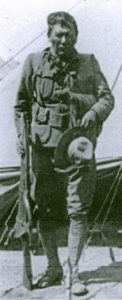 to alcoholism and drug addiction. With no jobs, the only thing left to do was get high or get drunk. Murder, rape and torture were commonplace. Roving bands of bandits were accepted as either thieves or protectors against the government soldiers. Few, if any of the people, were left untouched by the events leading up to the revolution yet the poor kept love alive in their families and persevered in life, holding on to what little happiness they could find.
to alcoholism and drug addiction. With no jobs, the only thing left to do was get high or get drunk. Murder, rape and torture were commonplace. Roving bands of bandits were accepted as either thieves or protectors against the government soldiers. Few, if any of the people, were left untouched by the events leading up to the revolution yet the poor kept love alive in their families and persevered in life, holding on to what little happiness they could find.
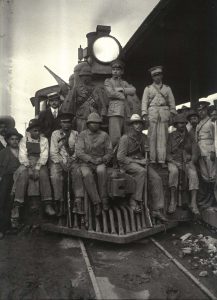
Huracheblog
BLACK SUN is a fictional account of my grandfather in his youth, but the everyday life of the people and the historical events, bandits, politicians, and birth of the revolution are all taken from interviews and countless research papers, diaries, personal journals, and books as I could find. Almost every character was researched so I could have authenticity about their actions, mannerisms, and demise in life.
Of course there will be debates from readers about who was truly good or bad in real life, but such discussions will always exist. At least I know that after reading BLACK SUN, people will have a realistic understanding of the Mexican Revolution of 1910, how it came about, and who were the participants in the civil war.
It’s a shame such a beautiful country as Mexico, rich in resources, culture, and great people, has had such a tragic history up to this very day. Until the government corruption, drug cartels, and high crime rate are brought under control, Mexico will always remain on the verge of another civil war.
I hope you will enjoy BLACK SUN. I look forward to your comments and thoughts on the book.
Glenn
BLACK SUN book cover design by Battle Cry Revival

by Glenn | Apr 13, 2016 | Novels
 Reviewed By Lit Amri for Readers’ Favorite
Reviewed By Lit Amri for Readers’ Favorite
Glenn Starkey’s Mr. Charon is set in the quiet town of Thornton, Texas, 1962, where best friends Eddie,  Andy, Cooper, Caleb and Herschel are trying to find some jobs in the summer. Old Mr. Nesbitt agrees to pay the boys $50 a week for yard work, cleaning, scraping and painting; a hefty pay for the teenagers. However, Nesbitt give them a stern and creepy warning – stay away from the barn.
Andy, Cooper, Caleb and Herschel are trying to find some jobs in the summer. Old Mr. Nesbitt agrees to pay the boys $50 a week for yard work, cleaning, scraping and painting; a hefty pay for the teenagers. However, Nesbitt give them a stern and creepy warning – stay away from the barn.
The friendship between the boys takes me back to some classics such as the coming-of-age film Stand by Me, but with the element of paranormal. It’s easy to relate to them, and I instantly rooted for Eddie, and Andy who has a tough life to deal with at home. Everything goes well for the boys and even the old hermit Nesbitt himself, who becomes friends with his young helpers. Unfortunately, Eddie’s curiosity gets the better of him one day as he sneaks into the barn, despite Nesbitt’s repeated warnings. He finds an Ouija board in a trunk and, from that moment on, everything changes.
Revenge outweighs rationale when Eddie and Andy decide to right the wrongs in their lives and use the Ouija board, giving the demon named Mr. Charon the opportunity to wreak havoc in Thornton. Can the boys save their hometown? The suspense will keep readers on edge. One of the evident appeals of Mr. Charon is Starkey’s descriptive prose. It gives vivid pictures of the surroundings and moves the story flawlessly, which also contributes to the plot’s deft execution. The classic good versus evil theme mixed with love, hate, and redemption makes Mr. Charon a great read.
“Mr. Charon” is available at all major online booksellers in eBook, softcover, and hardcover. For autographed print versions, contact the author.
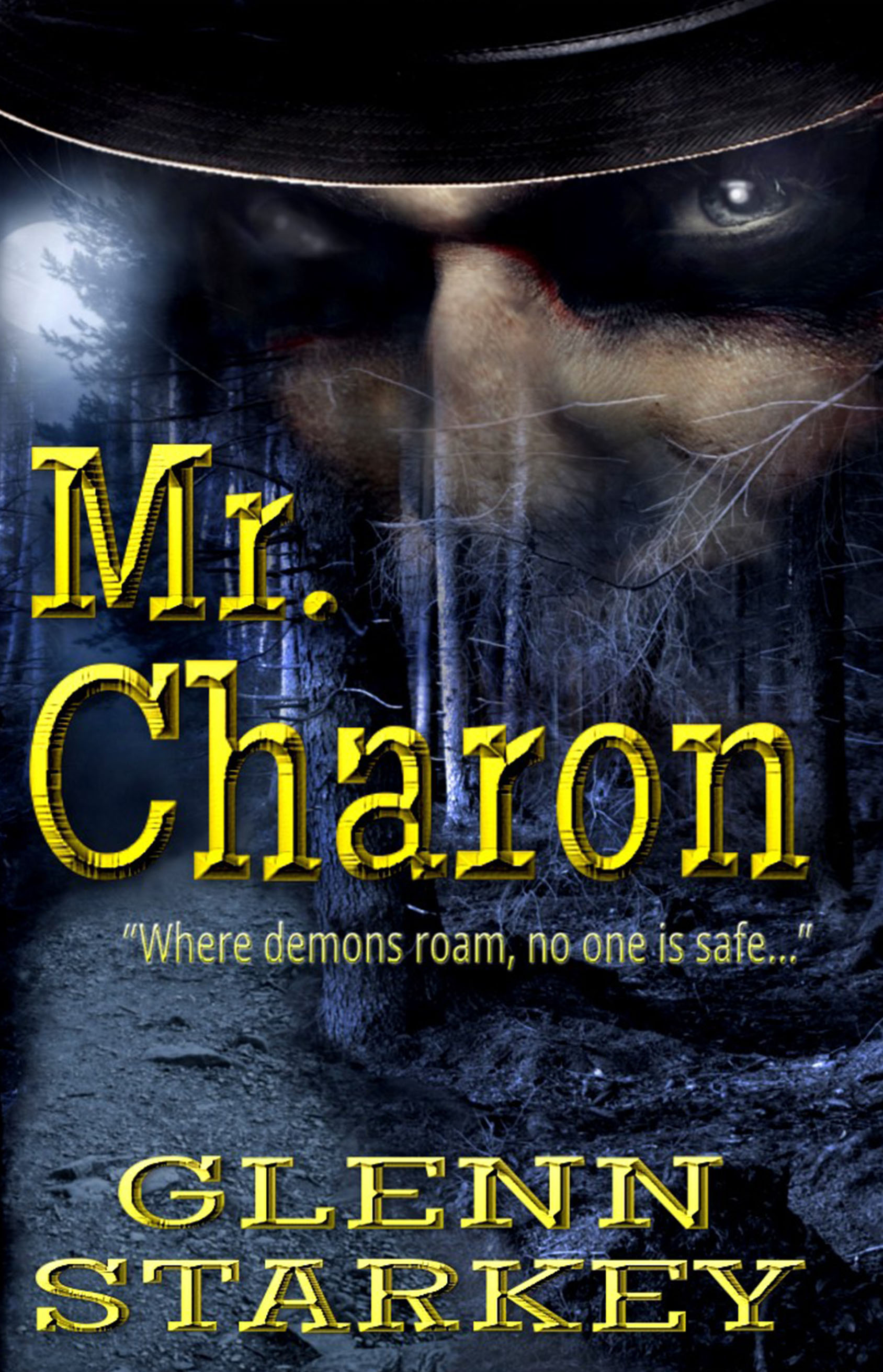
by Glenn | Jan 15, 2016 | General, Writing
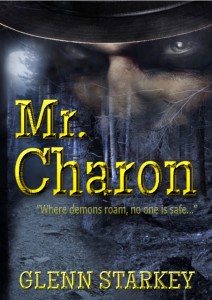 I was honored with an interview by the wonderful Belinda Witzenhausen, a writer, artist, Creativity Coach, and Editor in her own right. We discussed my latest book MR. CHARON, the inspiration and challenges of it as a Young Adult novel, my average writing day schedule, and wrapped it all up with a brief discussion of my soon to be released historical fiction, BLACK SUN.
I was honored with an interview by the wonderful Belinda Witzenhausen, a writer, artist, Creativity Coach, and Editor in her own right. We discussed my latest book MR. CHARON, the inspiration and challenges of it as a Young Adult novel, my average writing day schedule, and wrapped it all up with a brief discussion of my soon to be released historical fiction, BLACK SUN.
As I read the interview, Catching up with Author Glenn Starkey, I wondered if new writers would be encouraged by it, inspired to continue with their individual work, and hope to one day read their own interviews. Years ago I was in such a position. Working on my first novel, filled with hope, anxiety, and stress. Whenever I read an author’s interview and saw the dramatic covers of their multiple novels, I hoped to one day be in such a position.
Granted, I have yet to win the Nobel Peace Prize for Literature or be invited to meet the Queen of England to receive her personal accolades, but I feel good about the progress I’ve made to date. I still become excited when asked for an interview. In a few months I’ll have six novels out (with great covers) in various genres. My readership is constantly increasing, and I’ve won several awards and received excellent book reviews. Along the way I’ve learned from superb writers, received their mentorships and added new friendships. My entire experience, although with its share of disappointments and fatigue, has been a fantastic journey through life that I value.

Yes, selling books and making money is the end product. Writing books is a business. But the underlying goal for me (and the majority of writers) is the sole creation of a novel that carries a reader away into a world of humor, drama, and suspense—something that I wrote which gives readers hours of entertainment. No reward is greater for me than to learn that I deprived someone of sleep because they were caught up in my novel and couldn’t lay it aside. To be told that a passage made a reader laugh or cry is exhilarating… The long, exhaustive hours of writing a novel suddenly become worthwhile.
I hope you will read the interview, as well as check out my various novels. I welcome your feedback, discussions, and especially your reviews. My readers become my friends and you add to the great experience of writing.
All the best,
Glenn

by Glenn | Dec 20, 2015 | Novels
 “Mr. Charon” is a Young Adult, paranormal thriller that all ages will enjoy…
“Mr. Charon” is a Young Adult, paranormal thriller that all ages will enjoy…
In the dying town of Thornton, Texas, in the summer of 1962, five teenage boys have their fates forever entwined. Though all friends, their home lives are disturbingly different. Eddie has an abusive father, while Andy is the child of a single mother with debts too high for money alone to pay. They decide to right what they consider wrong in their lives.
A long forgotten Ouija board in a deserted barn becomes their answer. Together, they call upon a spirit but could never have expected the appearance of Mr. Charon, a demon who comes to haunt their small town with the help of his evil pets. Terror is unleashed upon Thornton, and although Eddie and Andy are to blame, their friends agree to help.
Mr. Charon has been released, and somehow, the boys must find a way to send him back to Hell and end the horror that has overtaken their fellow townsfolk. Good and evil collide as they fight not only for their own lives, but also for the souls of the entire community. Too late, the five boys have learned that where demons roam, no one is safe.
“Mr. Charon” will be available in eBook, softcover and hardcover formats. As of today, it’s released as an eBook on KOBO and Apple iBooks, and on Amazon and Barnes & Noble in softcover and hardcover formats. The eBook format will be coming as well. In the immediate future, all three formats will be available for order at every major online book seller and bookstore.
Check out the “Mr. Charon” page on this site for excerpts of the novel. And stop by to click the “Like” button on my
FB Author Page. I appreciate you visiting and checking out my books. Feel free to write to me through my Contact page on this site.
Thank you,
Glenn

 Through the years I’ve attended many a conference. Some were required training while others I requested due to their specialized subject matter. It wasn’t until my June 28th attendance at the weeklong Texas Gang Investigator’s Association (TGIA) Conference in San Antonio, Texas, that I came to fully appreciate the extent of intense effort it takes behind the scenes to produce an outstanding conference.
Through the years I’ve attended many a conference. Some were required training while others I requested due to their specialized subject matter. It wasn’t until my June 28th attendance at the weeklong Texas Gang Investigator’s Association (TGIA) Conference in San Antonio, Texas, that I came to fully appreciate the extent of intense effort it takes behind the scenes to produce an outstanding conference. was read and verified with a scanner before entering a class. This afforded the opportunity of a truthful exchange of critical data the officers could use upon their return home.
was read and verified with a scanner before entering a class. This afforded the opportunity of a truthful exchange of critical data the officers could use upon their return home. e, and yet it is ignored because most people still think of ‘gangs’ as those wannabe-bad-boys who spray graffiti on fences and buildings. Well, ‘gangs’ graduated long ago into the big-boy realm of crime and the public has failed to keep pace with the knowledge.
e, and yet it is ignored because most people still think of ‘gangs’ as those wannabe-bad-boys who spray graffiti on fences and buildings. Well, ‘gangs’ graduated long ago into the big-boy realm of crime and the public has failed to keep pace with the knowledge. Once we sat and began to talk, my respect for Johnny grew… and kept growing throughout our entire discussion. He represented the thousands of men and women that work tirelessly behind the scenes, without public notice or want of gratitude, in a filthy world that most citizens only see by watching action movies in a theater. Gang names, histories, rivalries, underworld criminal activities and statewide networks rolled out of him faster than I could take notes.
Once we sat and began to talk, my respect for Johnny grew… and kept growing throughout our entire discussion. He represented the thousands of men and women that work tirelessly behind the scenes, without public notice or want of gratitude, in a filthy world that most citizens only see by watching action movies in a theater. Gang names, histories, rivalries, underworld criminal activities and statewide networks rolled out of him faster than I could take notes.
 “Seeing children be brought into the prisons to visit their fathers,” he replied without hesitation. “When we were doing special ops in the prisons, I saw women bringing their children with them while they visited their husbands or boyfriends. Same thing when the men brought kids to visit their mothers.”
“Seeing children be brought into the prisons to visit their fathers,” he replied without hesitation. “When we were doing special ops in the prisons, I saw women bringing their children with them while they visited their husbands or boyfriends. Same thing when the men brought kids to visit their mothers.” though it’s violent. I treated them with respect when I arrested them. Disrespect only created further problems. In the old days it was easy to have a professional sort of respect toward one another. They knew I was chasing them and I knew they were running. When I caught them, they knew the game was up. I arrested them in a professional manner and they never gave me problems… I still see a lot of the ‘old’ guys. But the new breed of gang members doesn’t necessarily conduct themselves like that. They will do anything. The more vicious they can be, the more they like it.”
though it’s violent. I treated them with respect when I arrested them. Disrespect only created further problems. In the old days it was easy to have a professional sort of respect toward one another. They knew I was chasing them and I knew they were running. When I caught them, they knew the game was up. I arrested them in a professional manner and they never gave me problems… I still see a lot of the ‘old’ guys. But the new breed of gang members doesn’t necessarily conduct themselves like that. They will do anything. The more vicious they can be, the more they like it.”
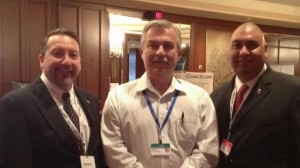
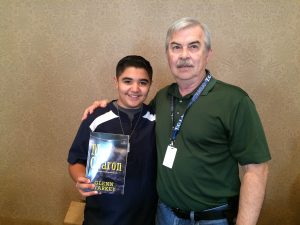





 to alcoholism and drug addiction. With no jobs, the only thing left to do was get high or get drunk. Murder, rape and torture were commonplace. Roving bands of bandits were accepted as either thieves or protectors against the government soldiers. Few, if any of the people, were left untouched by the events leading up to the revolution yet the poor kept love alive in their families and persevered in life, holding on to what little happiness they could find.
to alcoholism and drug addiction. With no jobs, the only thing left to do was get high or get drunk. Murder, rape and torture were commonplace. Roving bands of bandits were accepted as either thieves or protectors against the government soldiers. Few, if any of the people, were left untouched by the events leading up to the revolution yet the poor kept love alive in their families and persevered in life, holding on to what little happiness they could find.


 I was honored with an interview by the wonderful
I was honored with an interview by the wonderful 